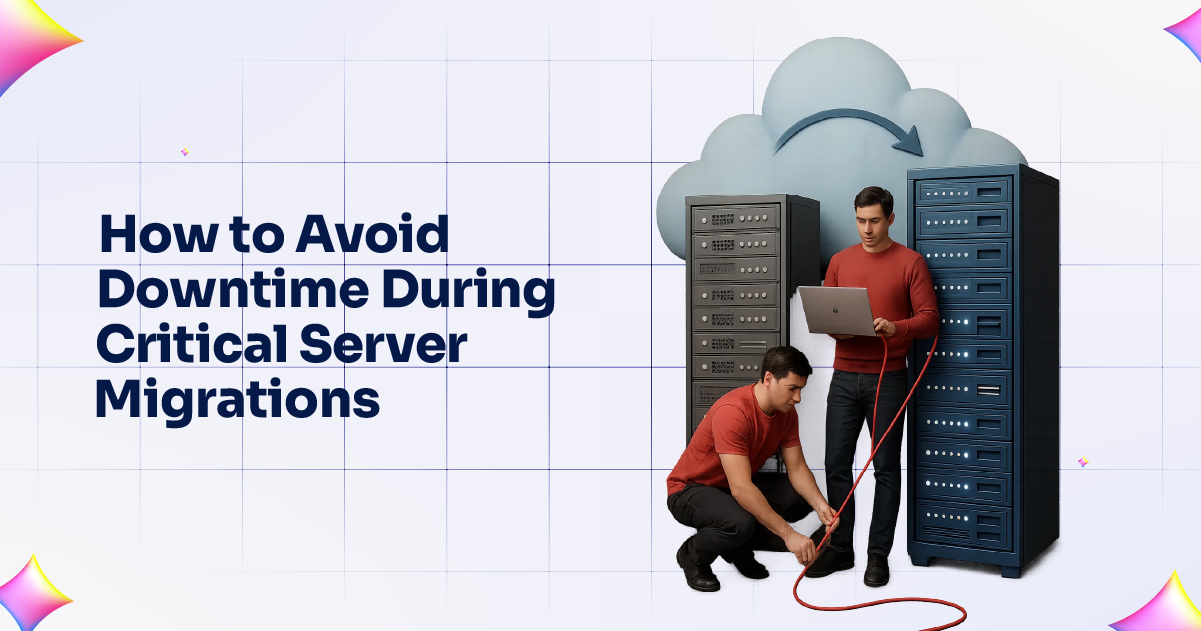
Server migrations are often essential for businesses looking to scale, modernize, or improve performance and security. However, one of the biggest concerns that organizations face during these transitions is downtime. Even brief outages can disrupt operations, affect user experience, and lead to financial losses. That’s why minimizing or completely avoiding downtime is critical during server migrations.
In this article, we’ll walk through key strategies and best practices to help your business migrate servers smoothly, without impacting productivity or availability.
1. Develop a Detailed Migration Plan
Planning is the foundation of any successful migration. Start by identifying:
- Scope of Migration: Understand what systems, data, and services will be affected.
- Dependencies: Document all software, databases, and third-party services connected to the server.
- Timeline and Deadlines: Define phases, testing windows, and a go-live date.
- Risks and Contingencies: Prepare for possible failure points with backup plans.
A detailed roadmap helps your IT team anticipate issues before they become problems.
2. Use a Staging Environment
One effective method to prevent downtime is to use a staging environment that mirrors your production system. Here, you can test the new server, software compatibility, and configurations before switching live traffic.
- Test all applications and scripts thoroughly.
- Identify potential bugs, bottlenecks, or compatibility issues.
- Validate data accuracy and performance benchmarks.
This step ensures that when the real migration happens, you’re operating with confidence—not guesswork.
3. Perform Migrations During Off-Peak Hours
If a complete zero-downtime migration isn’t possible, consider performing the move during off-peak hours—when traffic and usage are minimal.
- Nights, weekends, or holidays are ideal for most businesses.
- Notify customers or users in advance of possible limited access.
- Have your technical team on standby for immediate response if needed.
Scheduling migrations during low-traffic periods can help reduce the overall impact on users.
4. Implement Load Balancers and Redundancy
To ensure continuity, consider using load balancers to distribute traffic across multiple servers. During migration:
- Direct traffic to healthy servers while migrating others.
- Use redundant systems to handle live requests without interruption.
- Update DNS or routing settings only after the new environment is fully ready.
Load balancers help maintain service availability, giving your users a seamless experience while you work behind the scenes.
5. Use Cloud-Based Tools and Solutions
Modern Cloud Migration Services offer robust solutions to help businesses transition servers without facing downtime. These services often include:
- Real-time data replication
- Automated failover systems
- Scalable resources that adapt during the migration
- Monitoring tools to detect anomalies instantly
By leveraging cloud migration platforms, you can execute server transitions with high efficiency and minimal manual intervention.
6. Real-Time Data Synchronization
One of the major challenges in server migration is maintaining data consistency. Use tools that allow for real-time data synchronization between the old and new environments. That way:
- You avoid data loss during the transfer.
- Both environments stay aligned during the switch-over phase.
- You reduce the need for large-scale downtime post-migration for syncing.
Database replication and file syncing tools are essential in modern migration scenarios.
7. Monitor and Validate Everything
Throughout the migration process, set up real-time monitoring and validation tools:
- Monitor CPU, memory usage, bandwidth, and error logs.
- Perform automated health checks after each phase.
- Validate application behavior, login functionalities, and performance.
Also, conduct user acceptance testing (UAT) to ensure that business operations are unaffected from the end-user perspective.
8. Have a Rollback Plan
Even with the best preparation, there’s always a risk of failure. That’s why you must prepare a rollback plan:
- Ensure backups are taken right before migration.
- Create recovery points for data and configurations.
- Define clear triggers for rolling back and restoring the previous system.
Having a reliable rollback plan ensures business continuity in worst-case scenarios.
9. Work With Experts
Server migrations can be complex, especially for businesses without dedicated IT teams. Partnering with experts in server and cloud migrations helps you:
- Access experienced professionals familiar with best practices
- Use proven tools and methodologies
- Gain peace of mind that your critical assets are in good hands
Companies like Exinent provide Cloud Migration Services that prioritize uptime, security, and data integrity.
Final Thoughts
Avoiding downtime during critical server migrations is not only possible—it’s essential. With the right planning, tools, and expert support, you can ensure a seamless transition that keeps your systems running smoothly and your customers happy.
Migrating to modern infrastructure, especially the cloud, doesn’t have to come with the fear of disruption. Whether you’re moving to enhance performance, security, or scalability, following these best practices will keep your business on track—without skipping a beat.
Ready to move without missing a step? Partner with a trusted provider to take the complexity out of your server migration journey. Explore our Cloud Migration Services to learn how we can help ensure a seamless transition with zero downtime.
